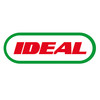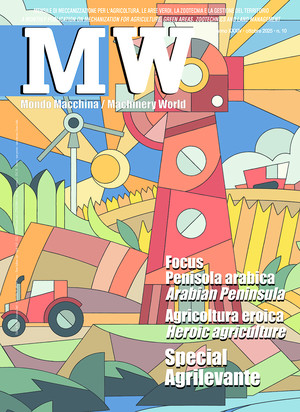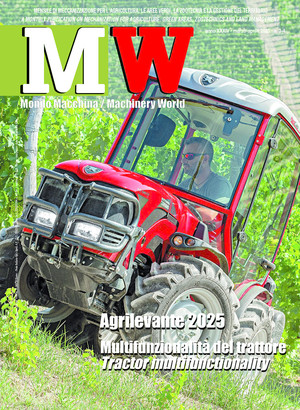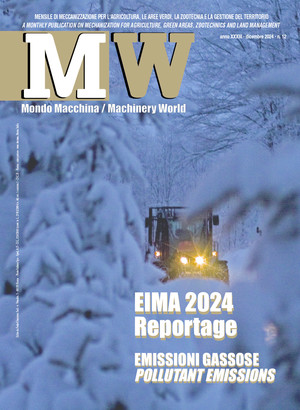
Playgrounds in green areas
Playgrounds are spaces intended for physical and motor skill activity, with all the benefits that this entails, including from a psychological perspective, but they are also places for socialization and growth, especially for young people. Constructing them in urban settings requires careful planning
Green management in a park includes a series of activities ranging from the creation and maintenance of green areas, the planting and maintenance of trees and shrubs, the management and conservation of natural habitats, and also the creation of educational, recreational and healthy habitats such as playgrounds. Playing outdoors makes it possible to interact with the natural environment and achieve physical as well as mental and psychological benefits. This applies to everyone, but it is especially true for children and adolescents. Creating a play area means creating an equipped space for recreation and physical and motor activity which, for children, also becomes a place for socialization and growth. Playgrounds are thus true social infrastructures. Placement should be made in an easily accessible position and well oriented with respect to the sun, yet also with enough trees to provide adequate shading, especially in the summer period when temperatures are often very high for several hours of the day. Moreover, care should be taken not to include plants that cause allergies or produce poisonous berries. Particular attention should be given to inclusiveness, so that the playground may also be used by those with physical and motor disabilities. There should thus be no architectural barriers and entrances should be designed accordingly. In fact, the design should always consider not only technical requirements but also user accessibility and safety requisites.
Safety flooring for playgrounds. Playground flooring must meet certain safety requirements for users. At the same time, it must be non-slip, to ensure stable and safe walking, and must also ensure rapid rainwater drainage in order to prevent hazardous waterlogging. Before considering the different flooring solutions, it is important to draw attention to the meaning of the impact area and the height of the fall from the equipment, as set out in specific laws. The impact area is the area intended to protect against falls from equipment whose suitability must be assessed based on the height of the fall. It is essential that there is no interference between the different impact areas of the playground. The free fall height is given by the maximum vertical distance between the support holding the user and the ground. Flooring that is able to absorb the energy of the impact caused by a fall may be referred to, among other names, as "impact attenuating surfacing", “safety flooring for playgrounds”, or “playground base”. The design and installation of such flooring, which cushions falls within the play area, is carried out by determining its shock-absorbing properties, performed on the basis of the head injury criterion – HIC - (Head Injury Criterion), as described in the UNI EN 1177:2018 standard. Briefly, this involves assessing the acceleration achieved at different fall heights by a measurement taken using an accelerometer which provides the value of the head injury based on the amount of impact energy. The regulation requires that the flooring must be tested at temperatures between 5°C and 55°C, with a tolerance of the critical fall height - CFH (Critical Fall Height) - between +1-7%. Thus, only potential head injuries are considered in the assessment, even if other parts of the body, limbs in particular, may be involved in the fall.
There are various solutions for creating impact attenuating surfacing for play areas, some made of natural materials and synthetic fiber modules (PVC and polypropylene) covered with grass, to flooring made of recycled or cast rubber. Natural material solutions created mainly for the play activities of small children aimed at stimulating cognitive and motor skills include those made of gravel (size 2-8 mm) and sand, and those that use natural bark or wood chips. However, these surfaces do not always offer satisfactory absorption as the material is subject to variations that make the HIC and CFH assessment difficult. A playground base that offers both natural and synthetic features is that made of recycled PVC honeycombs. The honeycomb shape allows for the growth of natural grass between the honeycomb patterns, and is still certified as impact attenuating surfacing. The modules are 23 mm in height and the elasticity of the PVC offers good protection. Another grass-covered surface solution is the flooring made with expanded polypropylene mats covered with synthetic turf.
Flooring made with elastic recycled rubber mats, of different shapes and sizes, or even with rolls, are made on solid surfaces, such as asphalt, concrete, paving, etc. There are two categories of flooring: natural SBR (black) or colored EPDM (green or red). The SBR material is an elastomer containing styrene and butylene derived from recycled rubber (especially tires), which is thoroughly washed. EPDM is an elastomer obtained from the polymerization of ethylene, propylene and diene, which is characterized by a marked resistance to heat and UV rays. The SBR and EPDM granules are mixed with a stabilized polyurethane glue resistant to UV rays. This category also includes flooring poured directly on site, resulting from the mixing of synthetic rubber and natural rubber. The material is poured onto a backing of black SBR rubber recycled from tires. The latter are highly elastic floorings, thus extremely valid for safety in the event of a fall, are non-slip, offer excellent drainage and may be colored as desired.
Play equipment: materials and safety standards. Playground equipment may consist of both static and dynamic elements. Static equipment includes different types of houses, castles, slides, tunnels, climbing walls, three-dimensional climbing nets, etc. In particular, in inclusive parks the houses and castles must be designed with large entrances and have adequate support elements. Dynamic equipment includes seat swings, basket swings, see-saws, carousels, spring toys, etc.
Unlike in the past, today there is a wide range of high-quality materials available to make equipment. This ranges from galvanized or stainless steel, suitable for uprights, platforms and ladders, to galvanized aluminum. High-density polyethylene (HDPE) is widely used for slides and springers, as is recycled plastic. Wood is widely used as a multi-functional and ecological material. It should be noted that certain materials absorb heat more and should be avoided in warmer regions and in areas that are not sufficiently shaded. This is especially true for steel and polyethylene. On the contrary, wood does not overheat even after lengthy exposure times. However, these materials are all recyclable. The choice of materials should take into account the setting in which the park is located and the type of maintenance to be provided, which, especially for wood, must be frequent.
Equipment safety is specifically dictated by a series of standards contained in some parts of the European standard EN 1176-1:2018. The standard has been implemented in Italy as UNI EN 1176-1:2018 and replaces previous standards. It is divided into various parts, from 1176-1 to 1176-11. Part 1176-1 deals with general safety requirements, the others deal with additional safety issues and related test methods for specific equipment, as well as some general aspects, such as installation and maintenance (1176-7).
With regard to equipment, 1176-2 deals with specific additional safety requirements and test methods for swings. For these, the height and width of the supporting structure must first be defined. In the case of two swings placed side by side, the standard establishes not only the distance between the two support chains but also between one swing and the other. Furthermore, the width of the seats and their minimum height from the ground (35 cm) are defined. Part 1176-3 deals with slides, part 4 with cable cars, part 5 with carousels, part 6 with swinging equipment, part 10 with enclosed play equipment, and part 11 with three-dimensional climbing nets. An accident risk that must absolutely be avoided is the entrapment of the head or a limb inside the equipment, which can also cause serious injuries. To prevent this from happening, equipment should have openings measuring no more than 9 cm and no more than 23 cm in diameter.
Playground installation, checks and maintenance. As already mentioned, the UNI EN 1176-7 standard provides guidance on the installation, inspection, maintenance and use of equipment. In particular, the nature of the various checks to be carried out is defined with regards to both the flooring (for which the HIC test must always be positive), and the individual equipment. This is to ensure safety in the management and use of the park. The checks include routine visual interventions, functional interventions (with a frequency between one and three months) and yearly general inspections. The aim is to identify the signs that indicate possible defects in the structures and equipment, due to wear, weather and even vandalism, and then to repair and replace individual elements or even entire pieces of equipment as may be needed. It is a good idea to plan an annual inspection and maintenance schedule that is well-defined in terms of frequency and the operations to be carried out, and to rely on knowledgeable and trained personnel.
Routine checks are essentially visual. Mostly it is a matter of checking if there is debris or changes to the soil and equipment. These may include, for example, protruding bolts or screws that may constitute dangerous points of entrapment for clothing and also possible causes of injury in the event of accidental impacts. Protruding hooks are particularly dangerous and should be prevented at all costs. Any breakages or wear due to age (flooring, cables, chains, etc.) should be promptly reported. The aim is to identify even the smallest change that might put the safety of children at risk and report it for timely intervention.
The functional checks operationally integrate the visual check reports and make use of a checklist to inspect the stability of the structure and the integrity of the elements that make up the individual equipment. In addition to repairing and possibly restoring degraded flooring and cleaning equipment showing signs of dirt using high-pressure water (100 bar), the condition of the individual equipment must be assessed. This means that the person performing the inspection must be knowledgeable about the equipment, understanding which points to inspect and also capable of dismantling and reassembling it. Here are some examples. If worn parts are found, especially for equipment with moving parts (rides), these should be replaced with original spare parts. On climbing walls, the fastening screws of the supports must be individually checked, tightened and replaced if necessary. The yearly inspections also serve an administrative purpose, as it is necessary to verify whether the actions performed during the functional checks (which should always be reported in the special safety inspection logbook) were performed in accordance with the scheduled checks and maintenance plan. They should be performed by highly qualified personnel capable of correctly assessing not only the condition of the flooring (HIC test and drainage capacity) and the equipment, but also their usage condition. For example, in the case of wooden uprights, the yearly inspection should always include a resistance check performed using a specific instrument.
Checks and maintenance of the green area. In addition to maintenance of the playground, proper maintenance of the green area in which the park is located is also essential. We have already discussed the presence of trees whose purpose is not only to provide shade, but also to reduce pollution and counteract heat waves. It is therefore essential to take care of the existing trees. Pruning should be kept to the bare minimum, such as cutting low or protruding branches that might be a source of impact, and dry or wind-damaged branches that could fall. In some cases, action will be required to better proportion and balance the foliage. Actions should make use of saws, shears, loppers and, for larger branches, battery-powered chainsaws to avoid pollution from exhaust fumes and reduce noise pollution. It is important to check the stability of the trees by means of a VTA (Visual Tree Assessment), using instruments such as an electric impulse hammer, resistograph, Pressler auger, and light to illuminate specific areas. Leaves that have fallen to the ground should be collected to prevent dangerous slips. Even in this case, any blowers and vacuum cleaners used should be electric and battery-powered. Grassland maintenance essentially consists of cutting the grass with traditional lawnmowers, the choice of which depends on the frequency and size of the grassy area, from self-propelled lawnmowers with an operator on board to robotic lawnmowers. Anti-parasite treatments should be made in accordance with the usage thresholds established by national and regional laws that require the use of low toxicity pesticides. In this regard, it is worth pointing out that integrated pest management often provides better results than chemical control methods.








